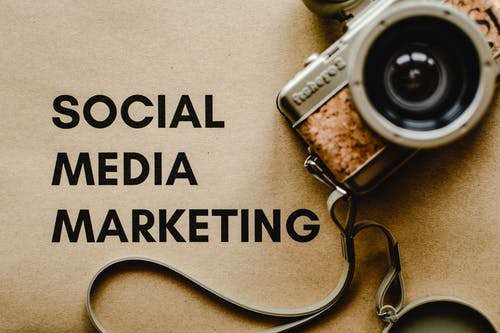What Should a Digital Communication Strategy Include?

Digital communications means having a digital presence and the strategic marketing tools for your business to be competitive in today’s modern Internet. So what should a digital communication strategy include?
7 Considerations When Creating Your Digital Communications Strategy
The technique of connecting with individuals via internet platforms is known as digital communication. In today’s modern internet world, digital communication is critical to competitive business marketing. Prior to the digital age, marketing professionals had to work with print media (printing), cable, television (video), radio (sound), and various billboard advertising placements. Today’s digital marketing workers must be familiar with modern digital platforms such as social media, email, messaging applications, and blogs.
To help you take your digital marketing to the next level, the best digital agency in Dubai shares seven considerations when creating your digital and communications strategy.
1. What is Your Brand Story?
At the heart of every successful communications strategy is a compelling brand story that gets people interested in your company, creates an unforgettable impression, and provides your target audience with something with which they can relate. Your brand story is not just a retelling of your company’s establishment and operations. It also incorporates the feelings that you want to be associated with your brand in order to trigger an emotional response from your audience.
Humanize Your Brand Story
Doing this will humanize your business and give it a personality, making it much easier for individuals to connect with you. And, its presence makes a significant difference when it comes to fostering a sense of community. You want your brand story to communicate who you are clearly, as well as the brand values and ideals. From there, the brand story should work as a natural link between your mission statement, brand style, and marketing campaigns.
Creating Your Brand Identity
In addition to creating an emotional connection and humanizing your company, your brand identity on social media must also be authentic. Customers admire brands that remain true to themselves and are honest with their customers. Of course, your brand story must also highlight the advantages of your products or services. Additionally, your brand story needs to be easily digestible and concise enough to be communicated in a few sentences.
To compose your brand story, first, start by defining your message, which should include answers to the questions “What does your brand do?”, “How does your brand do it?”, “Why does your brand do it?” and “Who is your brand?”
Next, you need to understand your target audience (read #2), and then you can start crafting your narrative. This is where you can bring all of these aspects together and communicate your shared values and principles and what your brand is doing now, and where you plan to go in the future. Your brand storytelling should also explain how your brand will impact people’s lives and the world.
2. Who is Your Target Audience?

Projection Goals aim for the target
It is essential for both your communications and digital strategy to identify and understand your target audience and their communication and digital behavior. You must meet your target audience where they are, where they already have a presence on the social media platforms, and in the areas where they are already spending their time. This is the secret to writing good content marketing.
Audience Personas
One of the first steps to identifying and understanding your target audience is to develop audience personas. These are fictional portraits of your target audience(s) that help you formulate a marketing strategy that is as valuable to your real audience as possible.
In this audience persona, you want to build out a thorough profile of the individual, including demographics (age, gender, salary range, education, and family), occupation and career details, personal values and lifestyle choices, online media consumption and purchase behavior information.
Bring Your Target Audience to Life
By developing these personas, you are bringing your target audience to life. From there, it becomes much easier to form a clearer picture of what they want from you and how your communications can reach them. If you don’t understand their needs, you can’t meet them effectively and profitably. Keep in mind that the more detailed your audience personas are, the clearer the picture of your ideal customer will be.
Many organizations opt to use digital channels to help identify their target audiences, as they offer the quickest and most cost-effective options for testing campaigns for several audience personas. You can then use these insights to determine the most effective communication method and the highest-performing segments. Your next steps should lead you to optimize those.
3. What Type of Content Are You Going to Use?
There is no denying that we are in the age of content marketing, and this is because it works so effectively. Consumers in the digital space want to engage with what they find useful, and content (when done correctly) can effectively fulfil those needs. Again, you need to understand your target audience to be able to decipher what their content needs are. When you do, and then you respond with high-quality, consistent, and customized content, you will find that you can’t go wrong.
Your content marketing strategy should include several different content types that make sense for where your target audience is looking for information and the form in which they like to receive it. Creating this tapestry of content is necessary to ensure that you are reaching everyone that you want to. Depending on how much content marketing you are going to do and the extensiveness of the campaign, you may want to plan out a content calendar for a month, season, or year.
No matter what your posting frequency is, a content calendar is critical if you are going to be able to stay on top of all your deliverables. You want to include everything — from draft due dates to posting dates, benchmarks, and review times — on this content calendar.
4. How Are You Tracking KPIs and other Metrics? 
Communications is a broad area filled with many moving parts, which is why you must be clear about key performance indicators (KPIs) and other metrics so that all team members will be on the same page with your performance marketing, the future of digital marketing. By incorporating criteria and measurements for success in your digital marketing strategy, you ensure that you have actionable metrics to keep everything on track. For external communications, these KPIs could be the number of media hits on campaign launch day or the number of earned media mentions.
When developing your communications KPIs, make sure you are making them as relevant as possible to the program or project that they are tied to. Even within one organization, there are no ‘one size fits all’ KPIs. You also want to set benchmarks to provide you with a baseline for measuring improvements and tracking progress over time. However you choose your KPIs, you want to ensure that you select ones that align with your business goals and the purpose of a particular campaign.
5. What Should Your Digital Strategy Include? 
When it comes to your digital strategy, there are several key components that it should encompass. First and foremost, your online presence is how and where your community can see and find your business online. This includes your website, social media profiles, corporate advertising profiles, outreach content, and any links, reviews or articles that mention your company and appear on other websites.
Digital Marketing Strategy
Your online presence includes your digital marketing strategy, which is how you promote your business by utilizing online resources and tools. These resources and tools include websites, apps and social media platforms, online banner ads, search engine marketing, Facebook ads, Google ads, guest blogs, newsletters, and email marketing (to name a few).
Your digital marketing strategy should also include how and where you will have customer interactions – whether through a mobile device, desktop computer, traditional phone call or social media. No matter which touchpoints you choose, you want to ensure you are providing potential customers with easy access to your business. In other words, it shouldn’t be too challenging for them to locate the information, service, or product they are interested in.
Vital Digital Elements
Other vital digital elements of your digital strategy are e-commerce, online security, mobile-based solutions, and digital business processes. All of these elements should work together to help your organization achieve its long-term goals. However, this also requires you to have a clear vision for the company as a whole. From there, you will be in a better position to ascertain which digital tools are necessary for your digital strategy and how they each can get you closer to achieving your goals.
6. What Are Your Digital Strategy Goals? 
Therefore, a significant consideration has to be regarding what your digital goals actually are. After all, if you don’t have clear overarching goals for your digital strategy, it will be almost impossible to put together a cohesive plan.
For example, your goals may be around growing brand awareness, increasing conversion rates, adding value to target audiences, building community, or acquiring/activating leads and customers.
Whatever they are, it is essential to know why you are doing what you are doing and investing in digital marketing. Unfortunately, implementing a long list of actions without a strategy to tie them together is one of the most prominent mistakes organizations make in their digital strategy. This is because your digital strategy goals establish your destination, while your tactics decide how you will reach them. Without clear goals, you will quickly become consumed by all the possible actions in the digital sphere and lose sight of the overall vision.
Similar to other aspects of your business, creating a smart digital strategy requires you to make well-informed choices to maximize competitive advantage, growth, profit, and value. But, it also means using the tools in the most purposeful way possible, leading to a greater ROI and a more effective use of your team’s time.
7. How Are You Approaching SEO and SEM?
How you approach search engine optimization (SEO) and search engine marketing (SEM) are both crucial for business success. These target web search positioning and provide strategies intended to make your website appear in the top results on the Internet. SEO is a process that naturally enables you to obtain traffic to your website, while SEM obtains traffic through payment positioning (generally ads). That being said, both of these strategies are important and effective and are often used together.
Search Engine Marketing
Keep in mind that after conducting a search, over 75% of potential customers don’t look at results past the first page, making it essential that your website is one of the first that they see. When it comes to approaching these two aspects of your digital strategy, you want to enlist the help of a premier search engine marketing agency as they are the ones with the tools and resources required to help you take these strategies to the next level.
SEO and SEM
When done correctly, SEO and SEM can be highly effective, but you need to ensure you have a suitable strategy for your brand, informed by your objectives, competitor research and budget. When working with a top search engine marketing agency, you can be assured that they will devise and execute this strategy. In addition, they will also work with you to optimize your campaigns and test different concepts in order to deliver the maximum ROI.
The best ones will also closely monitor actions performed on your website to help deepen your understanding of your target audience, the effectiveness of your landing page, conversion rates, and customer journey. Armed with this knowledge, they will then be able to continue optimizing your website content to drive traffic further.
Similarly, for SEO services, you want experts to audit your website before creating your tailor-made SEO strategies. SEO services may include technical on-page fixes, website content marketing and backlinking (to name a few). SEO is an ongoing process, so you also want your SEO team to be providing you with monthly reports.
Creating Your Digital Communications Strategy
When it comes to creating your digital communications strategy, a lot needs to be considered — from website design to app development, social media management to content marketing, SEO and SEM services, and brand storytelling. All of this can seem overwhelming, even for the most established companies, which is why it is recommended that everyone work with digital marketing professionals who have up-to-date insights with online trends, social media strategies, and content marketing that works.
After all, your brand’s digital persona is one of the most effective elements you have to reach new customers and present the world with an inside look at its personality. But, this only works if it is appropriately positioned and has carefully considered attributes. Your brand also must have a consistent and authentic tone of voice and visual style across all communication and digital channels. Are you looking to create your communications and digital strategy? Or do you have one that you feel needs to be enhanced?
What are you finding the most challenging aspects? What areas do you think will be the most impactful?
AUTHOR BIO: Stuart Harris is the Creative Director at Yellow, a Dubai branding agency, digital partner and advertising company working with progressive businesses to build bold, meaningful brands.

















[…] What Should a Digital Communication Strategy Include? […]